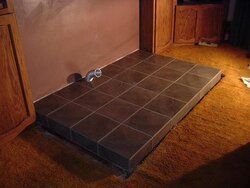Can i install an OAK thru the sub floor?
My 1500 sqft ranch is sitting on a sub floor. About 2 ft to the ground.
The stove is in the middle house. With no access to an outside wall.
My 1500 sqft ranch is sitting on a sub floor. About 2 ft to the ground.
The stove is in the middle house. With no access to an outside wall.


